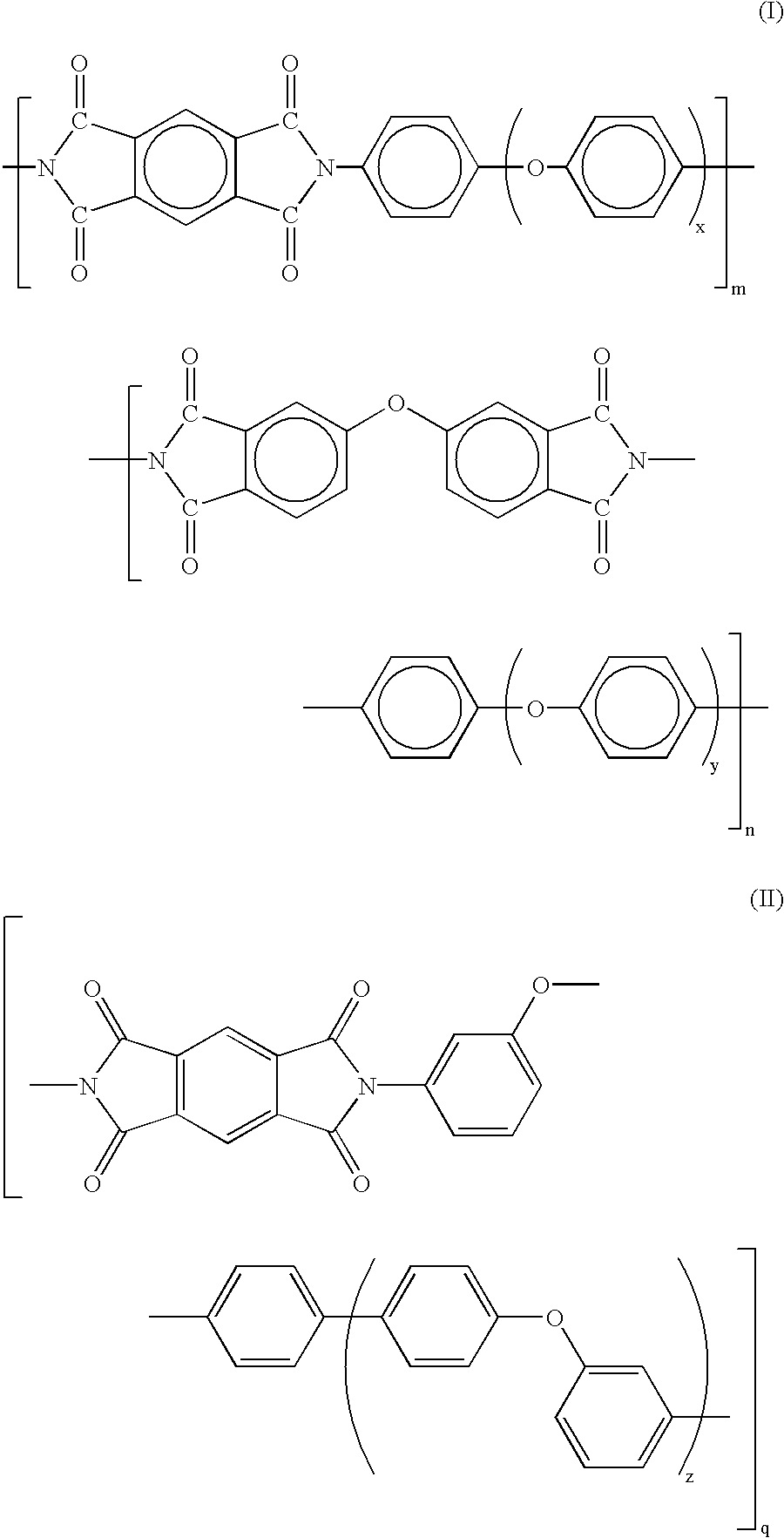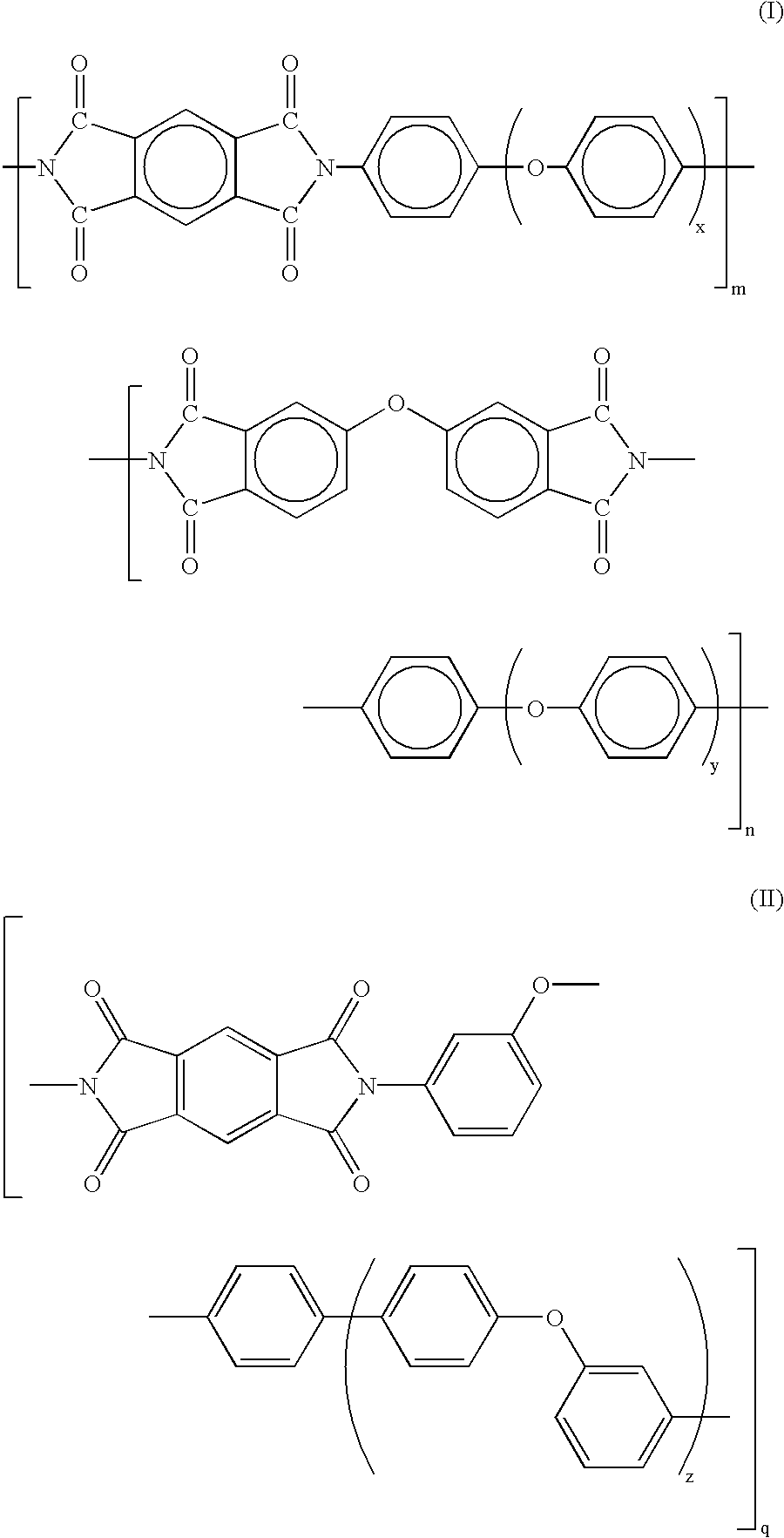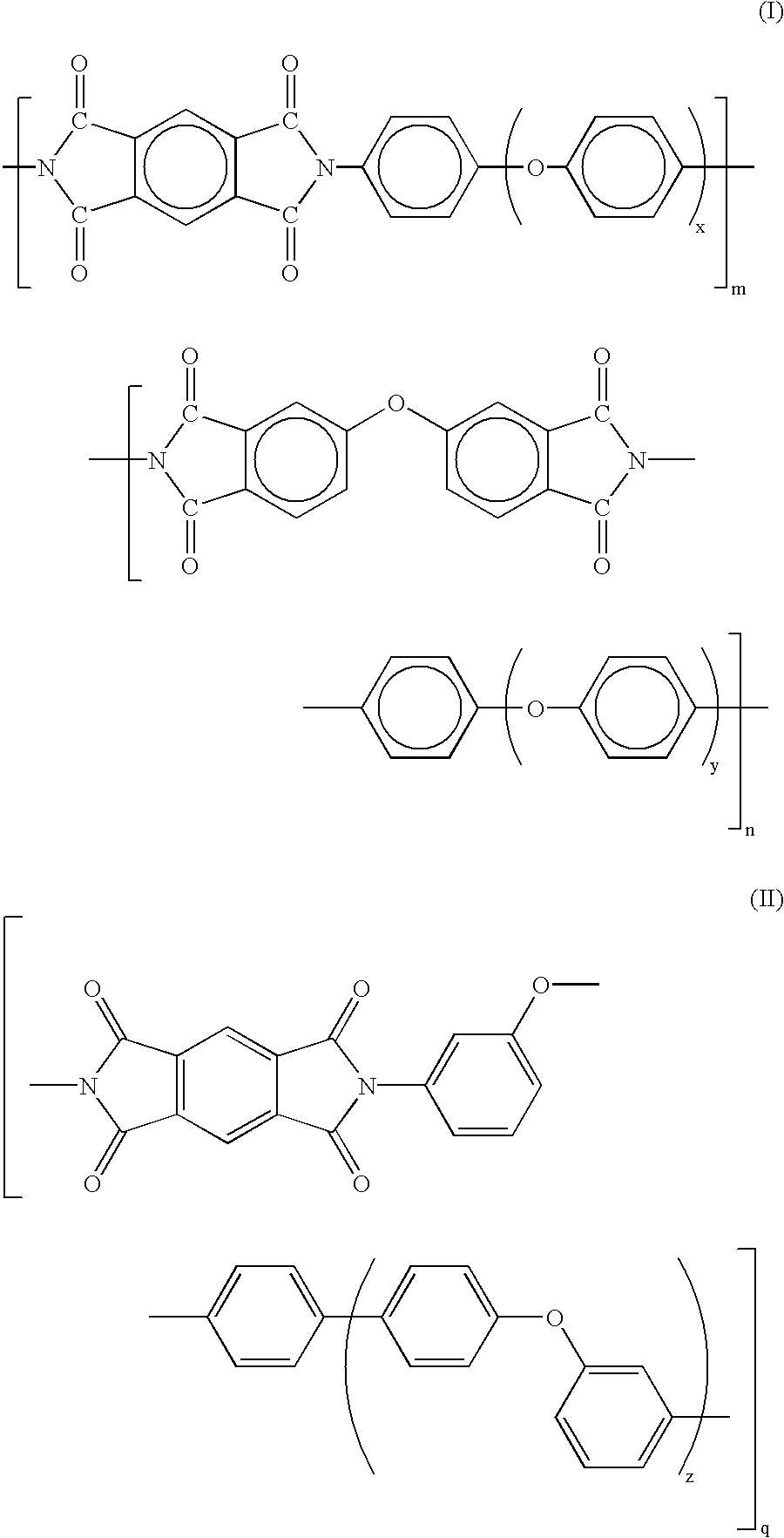Simplified flexible electrostatographic imaging member belt
a flexible, electrostatographic technology, applied in the direction of electrographic process apparatus, instruments, corona discharge, etc., can solve the problems of deterioration in physical condition, and deformation of image quality during extended cycling, and achieve simple material structure, excellent electrostatic latent image, and simple material configuration
- Summary
- Abstract
- Description
- Claims
- Application Information
AI Technical Summary
Benefits of technology
Problems solved by technology
Method used
Image
Examples
example vi
A flexible electrophotographic imaging member web stock was prepared in accordance to the procedures and using the same materials as those described in Comparative Example I, but with the exception that a 4-mil thick KAPTON KJ, a thermoplastic polyimide having a thermal contraction coefficient of 6.5.times.10.sup.-5 / .degree. C., a Glass Transition Temperature (Tg) of 210.degree. C., optical clarity from about 70% of the radiation wave length used for imaging member belt erase to about 100% of the radiation wave length used for imaging member belt erase, and not subject to attack or adversely affected by methylene chloride (available from E. I. Du Pont de Numours and Company), was chosen for the Polyester substrate support layer 26 replacement. The molecular structure of this Polyimide is given in formula (I) below: ##STR4##
wherein,
x=2 and y=2; and m and n are as illustrated herein.
Since both the polyimide substrate support 26 and the CTL 16 had similar thermal contraction coefficie...
example vii
A flexible electrophotographic imaging member web stock was prepared in accordance to Invention Example VI, with the exception that an alternate 4-mil thick thermoplastic polyimide, IMIDEX, having a thermal contraction coefficient of 6.0.times.10.sup.-5 / .degree. C., a Glass Transition Temperature (Tg) of 230.degree. C., optical clarity from about 70% of the radiation wave length used for imaging member belt erase to about 100% of the radiation wave length used for imaging member belt erase, and not subject to attack or adversely affected by methylene chloride (available from West Lake Plastics Company), was selected for substrate support 26 replacement. The molecular structure of IMIDEX polyimide is shown in formula (II) below: ##STR5##
wherein,
z=1 and q as illustrated herein.
The fabricated flexible electrophotographic imaging member required no anticurl backing layer to render imaging member flatness.
Commercially available polyimides, such as KAPTON F, H, and R types available from...
example viii
The flexible electrophotographic imaging member web stocks of Comparative Example I and Examples VI and VII were each cut to precise dimensions of 440 mm width and 2,808 mm in length. The opposite ends of each cut imaging member sheet was secured to give 1 millimeter overlap and ultrasonically welded, utilizing 40 KHz horn frequency, in the long dimension, to form a seamed flexible imaging member belt for fatigue dynamic electrophotographic imaging test in a selected xerographic machine.
Prior to carrying out the dynamic cycling belt test, the seam splashings 68 and 70, like those shown in FIG. 2 for control imaging member belt prepared with prior art imaging member web stock of Comparative Example 1, were measured and determined with the use of a Wyko Gauxe NT-200 for physical dimensions to give an average splashing height of about 79 micrometers and with about 0.85 millimeter in width. By comparison, the splashings of seamed belts prepared from the imaging member web stocks of Inve...
PUM
 Login to View More
Login to View More Abstract
Description
Claims
Application Information
 Login to View More
Login to View More - R&D
- Intellectual Property
- Life Sciences
- Materials
- Tech Scout
- Unparalleled Data Quality
- Higher Quality Content
- 60% Fewer Hallucinations
Browse by: Latest US Patents, China's latest patents, Technical Efficacy Thesaurus, Application Domain, Technology Topic, Popular Technical Reports.
© 2025 PatSnap. All rights reserved.Legal|Privacy policy|Modern Slavery Act Transparency Statement|Sitemap|About US| Contact US: help@patsnap.com



